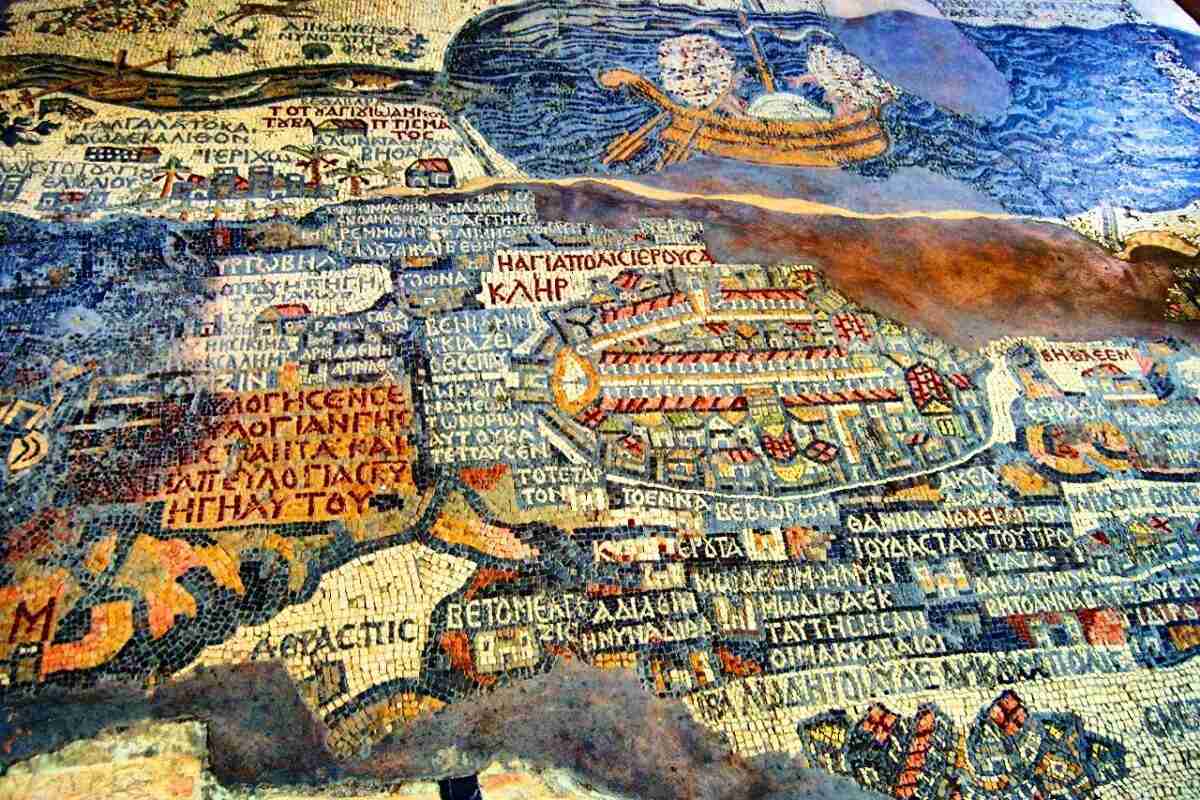+962 7 9635 8199
[email protected]
The Map of Madaba is a mosaic map located in the ancient town of Madaba, Jordan. It was created in the 6th century AD and depicts the Holy Land from Lebanon to Egypt, including Jerusalem and the surrounding areas. The map is considered a significant piece of cartographic history and is one of the oldest surviving maps of the region.
The Map of Madaba contains numerous religious references and depictions. The most prominent feature is the depiction of Jerusalem, which includes the Church of the Holy Sepulchre, the Dome of the Rock, and other significant religious sites. Other religious references include the Jordan River, the Dead Sea, and various cities and towns mentioned in the Bible.
The Map of Madaba also includes depictions of the surrounding landscape, including mountains, rivers, and bodies of water. The map is notable for its attention to detail and accuracy, with many of the features depicted in a realistic and recognizable manner. The map also includes depictions of various animals, plants, and other natural features.

The Madaba Map, also known as the Madaba Mosaic Map or simply the Madaba Mosaic, is an ancient mosaic map located in the town of Madaba in Jordan. It is one of the most important and well-preserved cartographic artifacts from the Byzantine era. The map is believed to have been created in the 6th century AD and was originally part of a larger mosaic floor in a Byzantine church known as the Church of Saint George.

Key features and information about the Madaba Map:
1. Worship and Liturgy:
Greek churches generally follow traditional liturgical practices, which include rich and symbolic rituals, chanting, and the use of icons and incense. Services are often conducted in the local language (Arabic in the case of Jordan), as well as in Greek.
2. Community:
The Orthodox Church in Madaba serves as a focal point for the local Christian community, providing a place for worship, fellowship, and communal activities. It might also offer services such as baptisms, weddings, and funerals.
3. Art and Architecture:
Given Madaba’s reputation as the “City of Mosaics,” the interior of churches in the area might be adorned with stunning mosaic artworks. Icons, religious paintings, and elaborate iconostases (icon screens) are also common features.
4. Pilgrimage:
Madaba is a destination for Christian pilgrims due to its historical and religious significance. The Greek Church might be associated with specific pilgrimage sites or landmarks in the city.
5. Cultural Heritage:
The Orthodox Church in Madaba, like many similar institutions, plays a role in preserving and promoting local cultural heritage, including traditions, music, and art.
It’s worth noting that the specifics of the Church in Madaba could vary, and there might be multiple churches and congregations within the city. To learn more about the particular history, significance, and activities of the Church in Madaba, you could consider reaching out us to orgnize a visit to Madaba for you .
